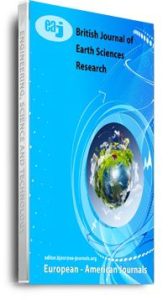Previous geochemical investigation of Ayetoro area discovered that its coastal sediments are enriched with sulphide mineralization. However, in order to determine the geochemical phases of the heavy metals in the coastal sediments, random sampling method was utilized across 10 locations, at a depth of 40cm using Van grab sampler at a sampling density of 200m interval. Atomic Absorption Spectrophotometer (AAS) Buck Scientific Model 205A was used to analyze nine (9) heavy metal concentrations namely Ni, Zn, Co, Mn, Fe, Pb, Cr, Cd and Cu in the coastal sediments, followed by sequential extraction of the metals, using five fractional phases. The results revealed that the geochemical concentration of the heavy metals as follows: Ni (5.89ppm – 16.82ppm), Zn (2.59ppm – 115.65ppm.), Co (1.22ppm – 22.77ppm), Mn (30.95ppm – 186.49ppm), Fe (6.632ppm – 1925.96ppm), Pb (5.17ppm – 55.96ppm), Cr (0.26ppm – 28.06ppm), Cd (0.13ppm -22.23ppm), and Cu (2.26ppm – 41.94ppm) and showed the concentration order as Residual>Reducible>Organic>Exchangeable>Carbonate. Most of the heavy metals in carbonate and exchangeable phase have low concentration except for Cd. This implied that Cd is of low mobility and bioavailability which is very dangerous as its intake by man leads to kidney diseases and causes bones to become weaker. Also, Mobility factor of Cd stood out because of its high concentration in the exchangeable phase compared to other four non-residual phases. The mobility and bioavailability of the heavy metals are in this order: Cd>Co>Ni>Pb>Cr>Mn>Cu>Zn>Fe respectively. The analysis of variance (ANOVA) revealed that the heavy metals are significantly different in all the phases based on their accumulation index in the sediments while majority of the heavy metals lacked the ability to remobilize but can be released into the environment under reducing and oxidizing conditions
Keywords: Heavy Metals, ayetoro. coastal sediments, mobility factor, sequential extraction

